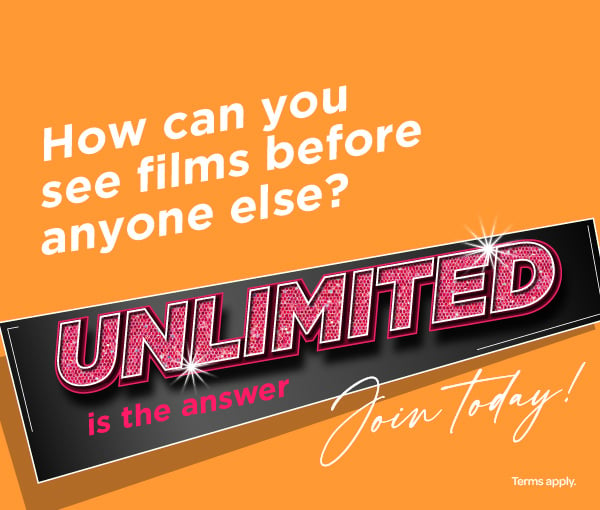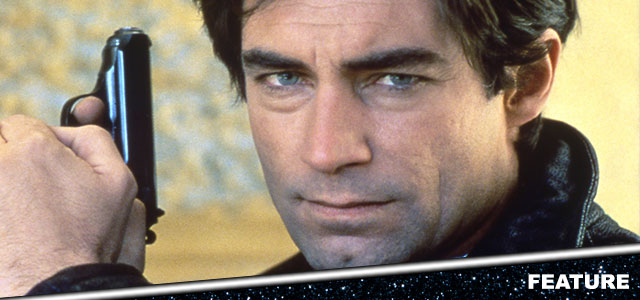
The 25th James Bond movie No Time To Die arrives in Cineworld in September, and we're counting down the days by revisiting all the 007 movies in chronological order of release.
In honour of Daniel Craig's swansong as 007, we're taking a nostalgic trip back through time. This week: Timothy Dalton makes his debut as James Bond in The Living Daylights...
What is the story of The Living Daylights?
British MI6 agents are dying, their bodies adorned with the mocking phrase 'Smiert Spionam' – translated as, 'death to spies'. The trail appears to point towards the new head of the KGB, Defence Minister Pushkin (John Rhys-Davies), whom British agent James Bond/007 (Timothy Dalton) is tasked with executing. Bond witnessed the death of one of his colleagues while on a training exercise at Gibraltar, and shortly afterwards is charged with transporting defecting KGB General Koskov (Jeroen Krabbe) from Bratislava, Czechoslovakia, to Austria.
However, Koskov's defection soon starts to look suspicious, and Bond begins to doubt whether Pushkin is involved in the conspiracy. Having initially thwarted an apparent assassination attempt on Koskov's life, Bond tracks down the would-be sniper: cellist Kara Milovy (Maryam D'Abo). However, it turns out the act was staged: Koskov and Milovy are lovers, and she engineered the attempt in a bid to make his defection look more genuine. In reality, Koskov is now free to team with arms dealer Brad Whitaker (Joe Don Baker), with the complex trail leading to diamond and opium smuggling, and more besides.
How did The Living Daylights get made?
By 1986, Roger Moore was out as James Bond, and the search for a new actor had begun. Producers Albert R. 'Cubby' Broccoli and Michael G. Wilson had come off Moore's final movie, A View To A Kill, with criticism ringing in their ears about Moore's age and the film's tiresomely comic tone. It was time to recast the role and take the franchise back to its (relatively) serious and grounded roots, honouring the spirit of James Bond author Ian Fleming. After all, Fleming had written the character of Bond as a troubled, paranoid and violent individual, not the eyebrow-raising figure of fun as imagined by Moore.
The decision was made to cast Welsh Shakespearean actor Timothy Dalton in the role; he had long been favoured by Broccoli to take on the part, and Dalton duly repaid the favour by paying close attention to Fleming's source material, looking at what made Bond tick in a psychological sense. However, Dalton's casting only came about after a great deal of turbulence with actor Pierce Brosnan, who had originally been earmarked to take over from Moore.
After Broccoli turned down Sam Neill for the part, Brosnan was selected on the strength of his audition. At the time, Brosnan was contracted to TV series Remington Steele, which had recently been cancelled by network NBC; upon the news of Brosnan's casting as 007, NBC anticipated a fresh surge of interest in the show.
They subsequently exploited a loophole in Brosnan's contract that compelled him to stay for another series, forcing Broccoli to withdraw the Bond offer on the basis that he didn't want the new 007 associated with a TV production. Ironically, and more than a little tragically, Remington Steele's ratings continued to fall and only five new episodes were made before it was ended altogether; Brosnan would eventually have his moment in the sun when he was cast as Bond for 1995's GoldenEye.
With Brosnan out of the picture, albeit very much against his will, the offer was opened to Dalton. Interestingly, he didn't accept straight away; a story goes that actor Robert Bathurst (Cold Feet) was persuaded to take an audition in order to hasten Dalton's acceptance of the part.
Dalton confessed to wrestling with the decision before finally signing a contract: "Without anything to do, I decided to start thinking about whether I really, really should or should not do James Bond. Although obviously, we’d moved some way along in that process, I just wasn’t set on whether I should do it or shan’t I do it. But the moment of truth was fast approaching as to whether I’d say yes or no. And that’s where I said yes. I picked up the phone from the hotel room in the Miami airport and called them and said, 'Yep, you’re on: I’ll do it.'"
His name on the dotted line, Dalton relished the chance to fashion a darker, angrier Bond who is very much a blunt instrument in the service of Her Majesty's government. "I definitely wanted to recapture the essence and flavour of the books, and play it less flippantly," he later explained. "After all, Bond's essential quality is that he's a man who lives on the edge. He could get killed at any moment, and that stress and danger factor is reflected in the way he lives, chain-smoking, drinking, fast cars and fast women."
Dalton elaborated on his close examination of the Bond books: "I was astonished. I'd read a couple of the books years ago, and I thought I'd find them trivial now, but I thoroughly enjoyed every one. It's not just that they've a terrific sense of adventure and you get very involved. On those pages, I discovered a Bond I'd never seen on the screen, a quite extraordinary man, a man I really wanted to play, a man of contradictions and opposites."
Certainly, Dalton's bearing, delivery and piercing stare, all honed from his training at the Royal Academy of Dramatic Art, strike a very different tone from Moore. These qualities had been present in his earlier films The Lion In Winter and Flash Gordon, and took full flight in The Living Daylights: the scene where a visibly enraged Bond confronts apparent KGB traitor Pushkin in his hotel room could be ripped straight from the pages of one of Fleming's books. And the moment where Bond's fellow agent Saunders is murdered by hitman Necros allows for something rare in the Bond universe: genuine rage and pathos, all brilliantly reflected in Dalton's eyes. To say this was an unexpected change in the wake of Roger Moore's tenure would be understating things.
Screenwriters Richard Maibaum and Michael G. Wilson turned, along with Dalton, to Ian Fleming's source material, chiefly the 1966 short story that would give the new Bond movie its name. The original story was published in a collection alongside other Fleming shorts including 'Property of a Lady', itself referenced in Octopussy. 'The Living Daylights' inspired the first half of the movie adaptation, including elements of KGB defection and a cellist who doubles as a sniper; however, the second half of the film, including the presence of the Afghanistan resistance known as the Mujahideen is largely invented by the filmmakers.
Principal photography began on the 17th of September 1986 at the Rock of Gibraltar, which acts as the backdrop to the thrilling pre-credits sequence. As expected for a Bond movie, the production was an international affair, spanning London's Pinewood Studios (the famed '007 Stage' was used for interior filming), Morocco (standing in for Afghanistan), Italy and Vienna. The scene where the traitorous Koskov is intercepted by Necros (who deploys milk bottles filled with explosives) was shot at Stonor House in Oxfordshire. Somewhat unusually for a Bond movie, that sequence allows another MI6 agent, Green Four, to showcase his fighting skills against Necros, an indication of how the filmmakers were attempting to thrash out a grittier, more believable Bond movie.
Although Necros himself is a memorable henchman (played by Andreas Wisniewski, later to be seen in Die Hard), the remainder of the villains in The Living Daylights are probably the film's weakest element. Jeroen Krabbe's Koskov is too much of a bumbling buffoon to convince us of his nefarious defection plan, and his cohort, Brad Whitaker, gets too little screentime to register. The latter character was played by Joe Don Baker, cast in the movie after the filmmakers saw him in acclaimed TV miniseries Edge of Darkness. Interestingly, that was directed by Martin Campbell, who would later helm Bond movies Goldeneye and Casino Royale (2006).
Faring better is Maryam D'Abo as Kara, the cellist pulled to and fro by both the machinations of Bond and those of her KGB boyfriend, Koskov. The Living Daylights dares to imagine a more complicated relationship between Bond and his latest conquest; when he and Kara first meet, Bond lies to her in order to gain her trust. Clearly in two minds about the nature of the deception, Dalton's 007 appears to harbour genuine feelings towards Kara, and she, in turn, becomes a valued ally when the truth eventually comes out, bravely flying a cargo plane while Bond and Necros fight to the death. D'Abo's understated performance is well-matched with Dalton's sensitive, emotionally-wounded 007; that Kara is a cellist also allows for one riotously silly and enjoyable set-piece, where they slide down a mountainside and across the Austrian border on a cello case.
Under the supervision of director John Glen, The Living Daylights features some of the most thrilling stunt sequences in the series. Glen was a longtime editor on the Bond movies, and he's got a good eye for framing and coherence during the most outrageous moments. In this movie, he strikes the right note between tongue-in-cheek escapism and just the right amount of dramatic investment; these qualities had arguably been lost during the later Roger Moore movies, which couldn't decide whether to play the material for laughs or seriousness.
One of the film's best scenes is the car chase in Austria, which brought Aston Martin back into the Bond fold for the first time since the Sean Connery heyday. Befitting the tough-minded 007 of the mid-eighties, the model this time is the sleek V8 Vantage, put to excellent use by Bond as he outmaneuvers the KGB with lasers fired from the alloys, front-mounted missiles and a rocket booster. This is one of the times where a Bond movie gets it absolutely right, playing up the ludicrous elements but also convincing us on an emotional level, largely thanks to Dalton's wry performance and D'Abo's reaction shots.
In a lovely touch, No Time To Die brings back the V8 Vantage, as driven by Daniel Craig's 007. It perhaps shows how the legacy of Dalton's Bond has grown in stature over time. Back in the 1980s, Bond as a character was competing with aggressive blockbuster competition like Lethal Weapon, Die Hard and Batman, which when combined with the proximity to Roger Moore's campier take on the character, caused many to underestimate Dalton's abilities. Only now, when we perceive Craig's plausible, vulnerable take on the world's most famous secret agent, are we in a position to appreciate Dalton's trendsetting, uncompromising approach.

READ MORE
- No Time To Die and the 6 James Bond movies we never got to see
- 7 actors who could play James Bond after Daniel Craig retires
- Shaken and stirred! Daniel Craig's defining 007 moments
What music is on the soundtrack for The Living Daylights?
John Barry (who cameos at the end of the movie as a conductor) delivered his final James Bond score with The Living Daylights, making the soundtrack a historic moment both within the franchise and the revered composer's career. Fortunately, Barry went out on a high with one of his finest Bond scores, equal to his career-topping 007 achievements with On Her Majesty's Secret Service and Goldfinger.
The Living Daylights is one of Barry's most thematically rich scores in the series, due to the fact that he's able to derive melodies from the three songs used in the movie. Add to this the regular and exciting presence of the Bond theme, updated with (for the time) trendsetting drum machines and synthesisers, and it emerges as a terrifically varied musical accompaniment. This begins with the rollicking opening cue 'Exercise on Gibraltar', which builds a terrific head of energy as it musically asserts the forceful, gritty nature of Dalton's 007. This approach is reprised in the rousing 'Ice Chase', which accompanies the gadget-laden Aston Martin's pursuit by KGB forces.
The main melody for The Living Daylights stems directly from the title song by Norwegian group A-ha (famous for 'Take On Me'). It's unashamedly eighties, but undeniably entertaining with its high-gloss and infectious rock undercurrent. The collaboration between the group and Barry was said to be difficult, with two versions of the song eventually composed.
The band's preferred arrangement of the song appeared on their 1988 album Stay On These Roads. However, in 2006, A-ha musician and writer Pål Waaktaar was highly complimentary of Barry's input: "I loved the stuff he added to the track, I mean it gave it this really cool string arrangement. That's when for me it started to sound like a Bond thing".
As usual, Barry shows a remarkable ability to translate the song's main melody into his underscore cues. The familiar Bond horns, trumpets and strings are present and correct in 'Assassin and Drugged', and particularly the utterly thrilling 'Hercules Takes Off'. Listening to the music in context, one can better appreciate Barry's inescapable sense of style, and his ability to invest tension in the most humdrum of set-pieces. And yet this is a Bond score that can be readily enjoyed on its own terms outside of the film, so fluid is the use of melody to convey the movie's narrative.
The second, even more memorable, theme stems from The Pretenders song, 'Where Has Everybody Gone', that baddie Necros listens to on his headphones. Chrissie Hynde's piercing vocals make the track memorable, although it's barely heard in full in the movie; even better is Barry's robust and catchy translation into the scenes where the villain appears. Musical highlights include 'Necros Attacks' and 'Inflight Fight', which reach the heights of all-time great Bond music.
The third and final theme is the love theme for Bond and Kara. It derives from the end credits number 'If There Was a Man', also performed by Hynde. It's perhaps the least memorable of the film's pieces, but Barry's subsequent melody offers a lovely grounding amidst the espionage and action. He takes his cue from the relatively mature relationship at the film's centre; unlike many of the Roger Moore Bond movies, the romantic angle in this movie has a degree of sincerity about it, which helps underline the gentle flute arrangements of tracks such as 'Kara Meets Bond'.
Although many composers have tackled Bond over the years, Barry was the official voice of the franchise. His gift with melody, unexpected rhythmic signatures and unusual musical devices helped pull audiences into 007's world like nobody else. The films undeniably lost something after Barry ceased to write the music for them, which means The Living Daylights, as a film and a soundtrack, ought to be treasured.
How was The Living Daylights received?
Were audiences and critics ready for Timothy Dalton's bracing take on 007? It's alleged that he may have been a couple of decades too early; after all, Daniel Craig's tough-minded take on the character slotted in nicely in the post-Jason Bourne landscape, where viewers demanded a little more emotional heft from their heroes.
Back in the 1980s, however, it was seemingly harder to convince people that the Bond universe could suddenly shift back towards something more plausible. For all the criticism of Dalton's predecessor Roger Moore, he had nevertheless defined a comedic approach that had become entrenched in the global mindset.
It was generally accepted that Dalton's attempts to humanise and ground Bond were admirable, if somewhat self-serious and humourless. Opinion at the time wavered between those who enjoyed the approach, and those who wanted 007 to retain his earlier flippancy; indeed, the debate over Dalton's short-lived portrayal continues to this day. Maybe it didn't help that Dalton only made two movies – had he made more, he may have better secured himself in the popular consciousness.
Critical response at the time was mixed. Esteemed critic Roger Ebert found the lack of humour a problem, whereas The Washington Post described Dalton as "the best Bond ever". Dalton was highly praised by predecessor Sean Connery, and in 2012, Roger Moore described The Living Daylights as a "bloody good movie", indicating how the film's reputation has weathered effectively over time.
The film's premiere took place on the 29th of June 1987 in Leicester Square and was attended by Prince Charles and Princess Diana. During production, the Royal couple had attended the set, prompting Diana to jokingly smash a prop bottle over Charles' head. Is there any clearer sign that the magic of the movies, in particular the magic of the Bond movies, is inescapable?
For all the hesitation over Dalton's portrayal of 007, The Living Daylights was a hit, grossing $191.2 million against a $40 million budget. This was more than enough to fill the production crew with confidence, although, sadly, Dalton would only get to make one more Bond film.
What was the next movie in the James Bond series?
Timothy Dalton made his second and final appearance as 007 in Licence to Kill, released in 1989.
When is No Time To Die released in the UK?
Click here to book your tickets for Time To Die, released in Cineworld cinemas on 30th September. Don't forget to tweet us your favourite James Bond movies @Cineworld.
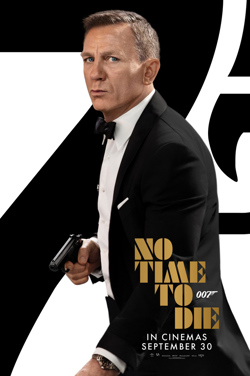
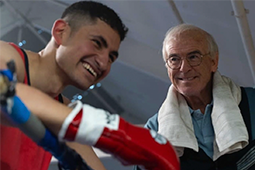

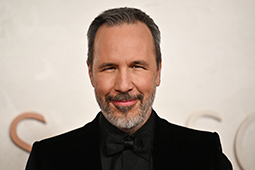
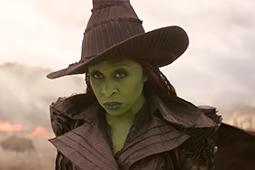
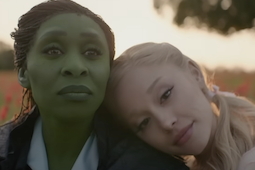
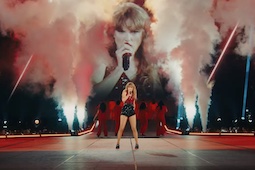

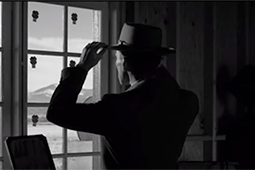
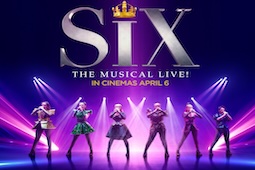
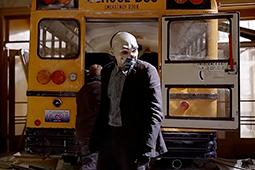
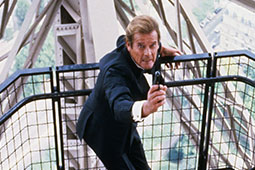


.jpg)
.png)

